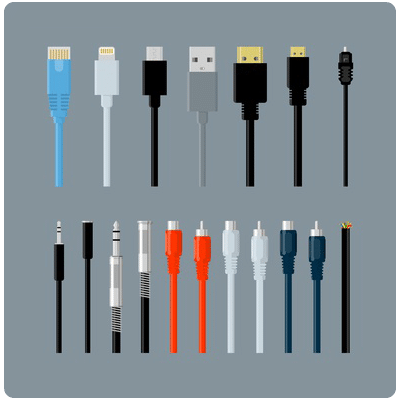The first thing that should be mentioned is that, with all the threats out there, every business needs dedicated IT management. Many small businesses have tried to keep their crucial IT working properly through what is known as break/fix. The basic strategy of this is: when a part of your company’s IT infrastructure breaks, you get it fixed. This strategy has some merits for companies that don’t necessarily use enterprise-level, or complicated, IT solutions; but, no matter what their position is, when they rely on the break/fix strategy, downtime is going to end up being an issue. The average small business owner may not even consider this costly as much of the technology management services that you would call when your IT breaks (or starts acting up) is done onsite and only takes a short time to fix. However, it typically costs a pretty penny, and there is no telling if the problem will cause others, or come back again frequently.
The problem with this is that every minute that your IT is down, your organizational profitability is hindered. Say you run a small retail store and your point of sale computer goes down. You make the call to the computer repair company and they come within an hour and your computer is up and running in two. That’s two whole hours where you are scrambling around trying to figure out how to service your customers’ needs without the use of your most important computing system. If you are lucky, you will be able to keep your business open during this time, but often you simply cannot as many businesses not only have their register through their POS system, they also have their inventory system through it. When dealing with IT downtime your service will inevitably be hindered, and you may actually lose repeat customers because of the outage as word of mouth carries further than ever before as a result of social media.
IT Services
With Managed IT services, you’ll never have to shut your business down or deal with long stretches of downtime. This is because it is handled much differently. With an MSP looking after your business’ computers and computing network, you will know in advance if one of your computers is going to fail. Coleman Technologies brand of IT services proactively monitors your computers and network; and, using state-of-the-art software, is able to leverage its built-in and extremely innovative automation options to your advantage, effectively reducing your IT costs by keeping your systems up and running efficiently. The fact is that most of the problems the modern PC has can be remedied with dedicated monitoring and management.
It’s easy to see how our proactive monitoring service can present value. Your return is properly functioning technology, boosting profitability, and effectively cutting your IT support costs; but that is just the beginning. An MSP provides several other services that are designed to deliver value. One such service is our Backup and Disaster Recovery service. You may be thinking, “how could backup produce a significant return?” Not only is it part of the value-based approach, it also protects your business from data loss, a major problem for any business that depends on its data.
Data loss doesn’t just happen when a disaster hits your business, it can happen any day in a multitude of different ways. In fact, most data loss is a result of employee negligence. Many businesses also have to deal with strategic hacking and social engineering attempts that put data at risk. A majority of small businesses that deal with an event where they lose large portions of their data are out of business within the next fiscal year. This scenario is especially problematic when the data that is lost belongs to vendors and customers, since, for a small business, reputation damage is hard to rebound from.
MSP-offered backup and recovery typically comes in the form of a network attached storage device that is expanded with the use of cloud computing. All the data you need will be backed up initially. After your data is redundantly stored in multiple places, snapshots of the changes made to your organization’s data will be taken periodically to ensure that, if you are forced to restore, that you aren’t losing much data. Data snapshots can be completed as little as every 15 minutes, preserving your data and immediately boosting the potential effectiveness of your business’ continuity strategy.
The value doesn’t stop there. MSPs typically also offer thorough network security practices to ensure that your network is protected. Outside of the comprehensive management you get with network and endpoint monitoring, you also will be outfitted with security solutions designed to ensure that if they don’t have access to the network and infrastructure, that they don’t get in, period. This is where the years of experience managing and maintaining business networks comes in. By knowing what to look for, and knowing where to strengthen security measures, your organization will deal with less downtime, essentially presenting you further opportunities for profitability.
Most MSPs also offer a vendor management service that is designed to keep clients from wasting time trying to juggle all their vendors. By handling your vendor relationships we are able to be a single point of contact for anything that you could need, saving you a lot of time. You can then focus on your business and not your vendors, which are relationships that tend to take up a lot of time. Moreover, with vendor management, you will get the solutions, services, and products you need at a price that works for you.
Additionally, most MSPs will also offer 24/7/365 help desk, so that if your organization does have problems, that it can get in touch with a remotely-connected technician immediately. Moreover, many MSPs also provide training resources that deliver information about industry best practices designed to keep security top of mind. If your staff is repelling threats instead of accepting them, it will go a long way toward securing your organization’s IT infrastructure and network.
Calculating Value
There is a lot a value in rolling out managed IT services, but how valuable is it to you? Well, there is no simple algorithm for this particular service. You could produce ROI totals for every service that your MSP provides for you then add them up, but that algorithm would get pretty long. Between the monitoring and maintenance, the network security, the vendor management, the backup and recovery, the around the clock support, the consultation, and the onsite support, you’re looking at a pretty significant amount of value from your monthly service agreement.
While it is hard to put a ROI on managed IT service delivery, people do try. There are managed IT ROI calculators all over the web. One of the easiest ways to do this is to estimate the revenue you generate by uptime and successful IT outcomes and compare it by the cost you pay for managed services. That will give you a rough idea about the value of your managed IT service.
Typically, the variable that most companies focus on when partnering with a managed services provider is downtime. As stated above, downtime is a business killer. Our strategy to deploying managed services is pretty simple: stop downtime from costing our clients’ money and marginalizing their success… and this strategy works! It takes committed and knowledgeable technicians, today’s best technology solutions, and clients that aren’t afraid to trust that we can deliver a valuable resource.
If yours is one such company, contact the IT professionals at Coleman Technologies inc today at (604) 513-9428.



 Creator of the Daily Success Media Network featuring Women Innovators Radio Optimal Health Radio, Author Interview and Thought Leaders Show. Tamara Patzer personal story about getting hacked and how Darren Coleman helped her understand the dangers we all face related to our computer use.
Creator of the Daily Success Media Network featuring Women Innovators Radio Optimal Health Radio, Author Interview and Thought Leaders Show. Tamara Patzer personal story about getting hacked and how Darren Coleman helped her understand the dangers we all face related to our computer use. 

